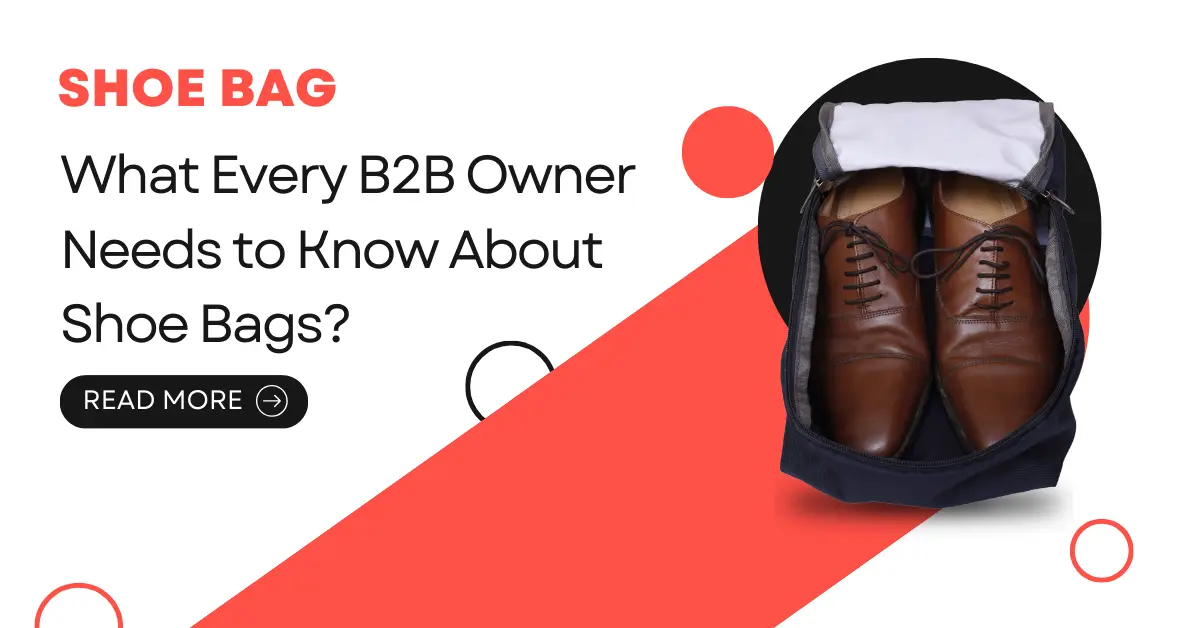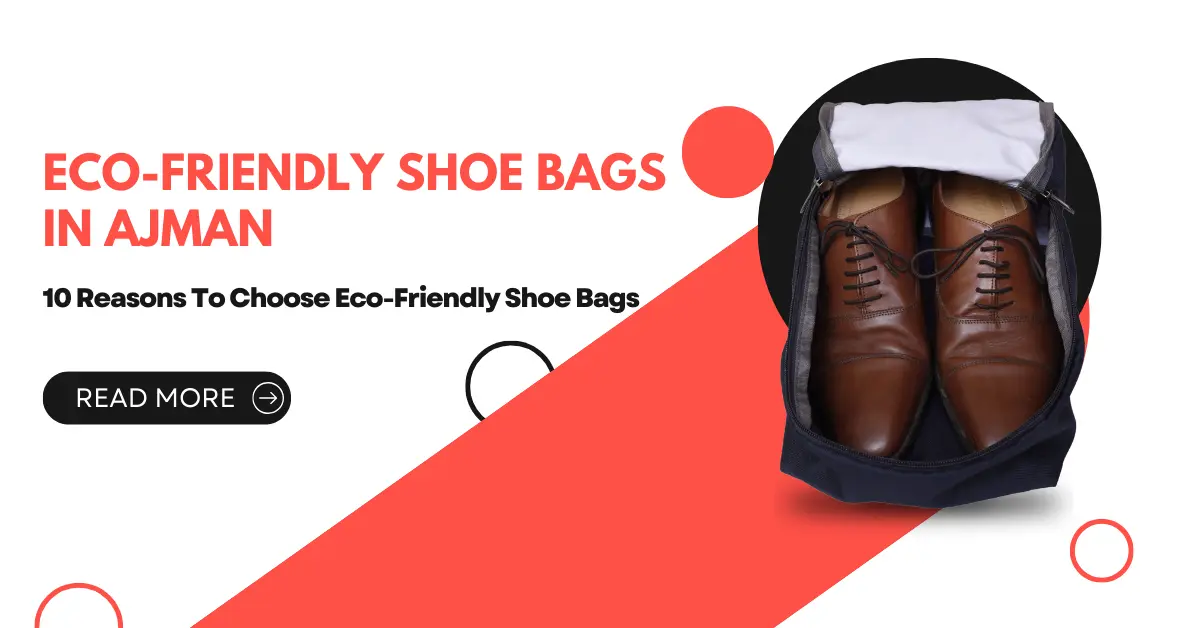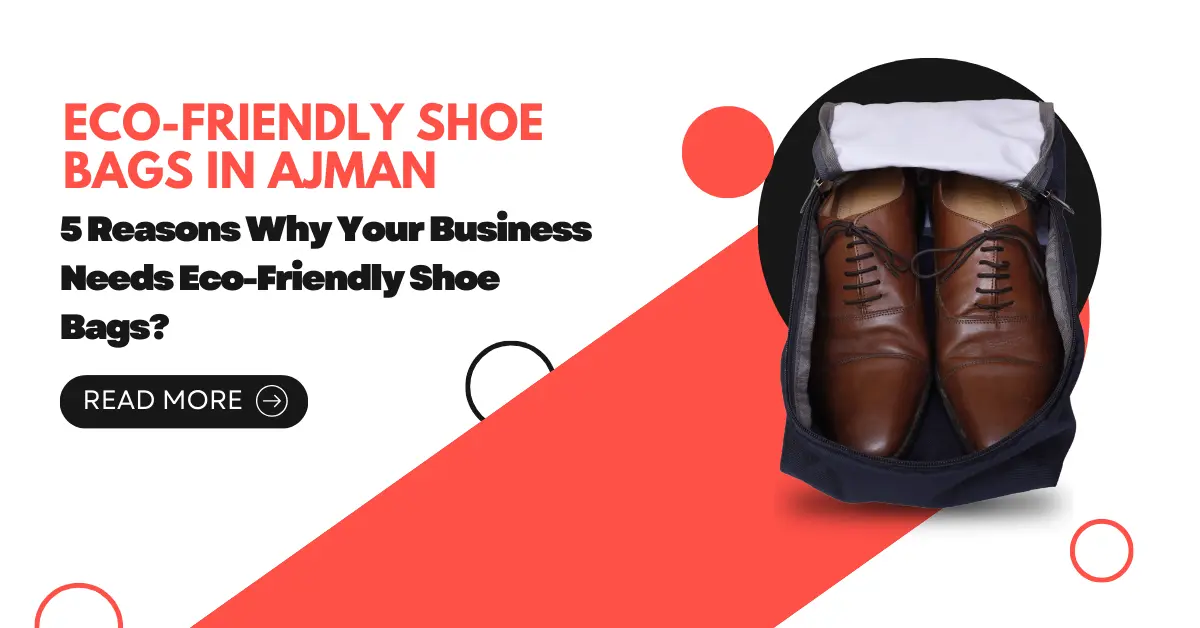Shoe bags, often overlooked, present a unique opportunity to elevate your brand image and build lasting client relationships.
Let us dive deep into the world of shoe bags for B2B owners. We’ll explore the benefits of utilizing reusable, non-woven, eco-friendly bags, delve into various durable and innovative options, and guide you towards selecting the perfect shoe bag for your specific needs.

Why Shoe Bags Matter for B2B Businesses
While shoe bags might seem like a minor detail, their impact can be significant. Here’s how these seemingly simple bags can benefit your B2B operations:
Enhanced Brand Image: High-quality, reusable shoe bags with your logo or branding message create a professional and polished impression. They showcase your attention to detail and commitment to quality, leaving a lasting positive impact on clients.
Improved Customer Experience: Providing shoe bags demonstrates your thoughtfulness and respect for your clients’ belongings. It makes transporting and storing shoes convenient, fostering a sense of appreciation and loyalty.
Increased Brand Awareness: Reusable shoe bags function as walking advertisements. Every time a client utilizes the bag, your brand logo is on display, promoting brand awareness at trade shows, conferences, or during client visits.
Eco-Friendly Practices: By opting for reusable, non-woven materials, you contribute to a more sustainable future. This resonates with environmentally conscious clients and aligns your brand with responsible practices.
The Power of Reusable and Eco-Friendly Shoe Bags
In today’s eco-conscious world, reusable and eco-friendly shoe bags are no longer a fad, but a necessity. Here’s why they’re the perfect choice for B2B businesses:
Cost-Effective: Reusable shoe bags eliminate the need for disposable plastic bags, leading to long-term cost savings.
Durability: High-quality materials ensure these bags withstand repeated use, making them a sustainable and cost-effective option.
Environmentally Friendly: By choosing non-woven materials derived from recycled resources or organic materials like cotton, you minimize your environmental footprint and appeal to eco-conscious clients.
Exploring Different Types of Shoe Bags for B2B Use
Shoe bags come in a variety of styles and materials, catering to diverse B2B needs. Here’s an overview of popular options:
Drawstring Shoe Bags: Simple and versatile, drawstring bags offer a convenient way to store and transport shoes. They’re ideal for trade shows or sample deliveries.
Zippered Shoe Bags: Offering an extra layer of protection, zippered bags are perfect for storing high-end footwear or delicate samples.
Non-Woven Shoe Bags: Eco-friendly and durable, these bags are a popular choice for B2B businesses. They’re lightweight, breathable, and customizable with your branding.
Mesh Shoe Bags: Promoting ventilation and preventing moisture build-up, mesh bags are ideal for athletic footwear or wet shoes.
Luxury Shoe Bags: For high-value items, consider luxurious options crafted from velvet or satin. These elevate the client experience and showcase the premium quality of your products.
Customization Options for Shoe Bags: Branding & Functionality
Shoe bags offer a unique canvas to showcase your brand identity and enhance functionality. Here are some customization options to consider:
Logo Printing: Displaying your logo on the bag creates brand recognition and reinforces brand messaging.
Color Options: Choose colors that complement your brand palette or use contrasting colors for a bolder statement.
Compartments: For added functionality, consider bags with separate compartments for shoes and accessories.
Size Variations: Offering a range of sizes caters to different footwear types and client needs.
Clear Windows: Bags with clear windows allow for a quick glimpse of the shoe’s contents, saving time while searching.
Choosing the Right Shoe Bags for Your B2B Needs
Selecting the ideal shoe bag requires considering several factors specific to your B2B operations. Here’s a breakdown to guide your decision:
- Functionality:
What type of footwear will the bag hold? Dress shoes, athletic shoes, or bulky work boots will require different bag sizes and features.
Do you need compartments for accessories? If you’re including socks, shoe care products, or other items, consider bags with compartments for organization.
- Durability:
Frequency of Use: For occasional use at trade shows, a basic drawstring bag might suffice. For frequent client deliveries, opt for durable materials like non-woven fabrics or canvas.
Weight of Footwear: Heavy work boots require sturdier materials compared to lightweight dress shoes.
- Branding and Presentation:
Target Audience: Consider the level of professionalism your clients expect. A luxury brand might require luxurious velvet bags, while a construction company might prioritize durable canvas options.
Brand Message: Shoe bags should resonate with your brand image. Choose materials, colors, and printing options that reflect your brand identity.
Innovative Shoe Bag Features for B2B Applications
Shoe bags are no longer limited to basic storage. Innovative features can further enhance their functionality and brand impact:
Ventilation Panels: Mesh panels promote air circulation, preventing moisture build-up and unpleasant odors, especially important for athletic footwear.
Reinforced Handles: For heavier shoes, consider bags with reinforced handles for comfortable carrying.
Shoulder Straps: For bulkier footwear or multiple pairs, a shoe bag with a shoulder strap offers convenient hands-free carrying.
Water-Resistant Materials: Protect shoes from unexpected spills or rain with water-resistant materials like coated nylon or polyester.
Customizable Closures: Velcro closures offer quick access, while zippers provide a more secure seal. Consider your specific needs and client preferences.
Using Shoe Bags to Promote Brand Loyalty
Shoe bags extend beyond simple storage; they can be powerful tools to build brand loyalty. Here’s how:
Promotional Giveaways: Offer reusable shoe bags as promotional giveaways at trade shows or conferences. This generates brand awareness and provides a useful item for attendees.
Loyalty Programs: Reward loyal customers with high-quality or customized shoe bags. This personal touch fosters appreciation and strengthens customer relationships.
Upselling and Cross-Selling: Offer shoe bags as add-on purchases with footwear or complementary shoe care products. This increases customer value and promotes additional sales.
By strategically utilizing these strategies, B2B businesses can leverage shoe bags to create a positive brand experience and cultivate lasting customer loyalty.
The Art of Sourcing High-Quality Shoe Bags for B2B Needs
Finding the perfect shoe bag supplier is crucial for B2B businesses. Here’s a ways to navigate the sourcing process:
Identify Your Needs: Clearly define your ideal bag size, material, features, and customization requirements. This helps target suppliers who meet your specific criteria.
Research Potential Suppliers: Utilize online directories, industry publications, or trade show participation to identify reputable manufacturers or distributors of shoe bags.
Evaluate Supplier Qualifications: Look for suppliers with experience in B2B manufacturing, offering customization options, and a proven track record of quality and reliability.
Request Samples and Quotes: Request samples from shortlisted suppliers to assess the quality of materials, construction, and brand printing. Compare quotes considering price, minimum order quantities, and delivery timelines.
Negotiate Terms: Once you’ve identified a suitable supplier, negotiate terms that align with your budget and business needs. Discuss bulk order discounts, payment terms, and lead times.
Quality Control: Establish clear quality control procedures to ensure the final product meets your specifications. This might involve requesting pre-production samples or on-site inspections at the manufacturing facility.
Optimizing Shoe Bag Production for B2B Efficiency
Once you’ve chosen a supplier, consider these factors to streamline the production process:
Bulk Ordering: Negotiate bulk order discounts to reduce per-unit costs. This is ideal if you anticipate consistent demand for shoe bags.
Lead Time Management: Factor in lead times for production and shipping when placing orders. Timely ordering ensures you have sufficient stock to meet client needs.
Inventory Management: Maintain an organized inventory system to track shoe bag stock levels and avoid stockouts.
Customization Options: Discuss potential customization options with your supplier. Explore possibilities like pre-printed logos, specific color variations, or unique size configurations for your brand.
By implementing these strategies, B2B businesses can ensure a smooth and efficient production process for their customized shoe bags.
The Future of Shoe Bags: Sustainable and Technological Advancements
The shoe bag industry is constantly evolving, with a growing focus on sustainability and innovative features. Here’s a glimpse into what the future holds:
Biodegradable Materials: The development of biodegradable materials like PLA (polylactic acid) derived from plant sources offers a more sustainable alternative to traditional materials.
Recycled Content: Increasing use of recycled materials in shoe bag production minimizes environmental impact and aligns with eco-conscious business practices.
Smart Technology Integration: Imagine shoe bags equipped with RFID chips for tracking inventory or embedded sensors that monitor temperature and humidity, ensuring optimal storage conditions for footwear.
These advancements highlight the exciting possibilities for shoe bag in the future. By embracing sustainable materials and innovative technology, B2B businesses can further enhance their brand image and contribute to a more responsible future.
Shoe bags might seem like a simple accessory, but they offer significant advantages for B2B businesses. From promoting brand awareness and fostering customer loyalty to contributing to sustainable practices, shoe bags can be a strategic investment that yields positive returns.
We have explored the various aspects of shoe bags for B2B owners, from understanding their benefits and choosing the right type to optimizing production and exploring future trends. By leveraging the insights shared here, B2B businesses can unlock the full potential of shoe bag and elevate their brand image in the ever-competitive marketplace.





